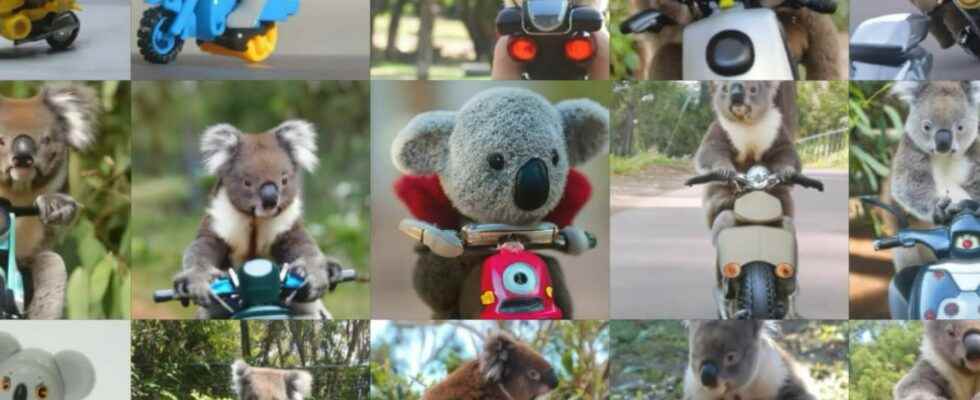The OpenAI company, which specializes in artificial intelligence, has just developed a neural network capable of generating photorealistic images. A simple sentence of text is enough to create almost any montage imaginable.
You will also be interested
[EN VIDÉO] Interview: how was artificial intelligence born? Artificial intelligence aims to mimic the functioning of the human brain, or at least its logic when it comes to making decisions. Jean-Claude Heudin, director of the research laboratory of the IIM (Internet and Multimedia Institute), explains the origin of this research.
OpenAI has just released a second version of its artificial intelligence dedicated to image generation. baptized DALL-E 2 (pronounced like the painter Dalí), she is able to transform a simple sentence of text into a photorealistic image. The first version was content with a drawing on a plain background. This new AI makes much more complex compositions.
OpenAI is a direct competitor to DeepMind from Google. This company dedicated to AI was founded, among others, by Elon Musk and received investments from Microsoft. Its DALL-E 2 resembles the GauGAN (pronounced like the painter Gauguin…) from Nvidia, first able to turn a sketch into a photorealistic landscape, then do the same from a text sentence.
Explanation of how the DALL-E AI works with many examples. (In English, enable automatic translation of subtitles.) © OpenAI
AI can also produce variants of an existing image
However, DALL-E 2 is much more complex than the competition because it is not content with landscapes. The AI is able to create an image combining several common elements, such as ” a teddy bear skateboarding in Times Square “. The system is based on CLIP, a neural network from OpenAI trained on a large number of images with description. This AI was designed to analyze an image and come up with a description, but here performs the opposite operation. A second stage then decodes the result of the first in order to create a coherent image.
This two-step system also allows other possibilities. The AI is able to take an existing image and replace an element, or create a variant inspired by the original by modifying the angle, the pose, and the aspect of the subject. However, to prevent abuse, the AI cannot generate photorealistic images of human faces, and the firm has limited its ability to produce images with adult content or violence.
Interested in what you just read?
